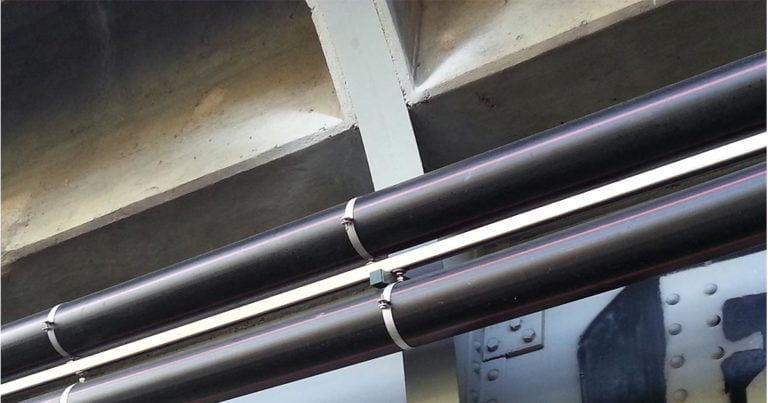Polyethylene pipe dilation is often wrongly seen as a drawback whereas a welded and buried polyethylene pipeline does not require any special dilation studies or installation precautions. Because they are in one piece, polyethylene pipelines are unaffected by individual dilation-related effects.
In the specific case of a polyethylene network connection to a non-monolithic pipeline (e.g. a non-self locking push-fit pipeline or similar), a fixed point will be needed.
In the case of aerial installation, specific studies must be carried out to control the dilation effects. HDPE pipes will expand or contract when subject to temperature changes. The greater the change in temperature, the greater the dilation effect. This leads to elongation, retraction or tensile stress on the HDPE pipe. To combat this, two solutions can be implemented, one being to leave the pipe free to lengthen and shorten, in which case a system must be implemented to take up the slack/payout the pipe such as expansion loops or expansion joints; the other being to stop the pipe from elongating or retracting by using fixed points. Such fixed points must be designed to resist the thrust generated by the dilation.
In the majority of cases in which polyethylene pipes are installed aerially, especially if suspended under a bridge, dilation is often controlled by using correctly-dimensioned fixed points.
MPS
